
Writing the Book of You, 2021
This brief writing and talk for the University of Texas at Dallas biomedical engineering department’s 2021 open-mic serves as a brief exploration of the practice of mindful creative visualization.
This is meant to serve as a brief snippet of a chapter from a book I wrote. For these slides I tried to minimize the amount of text since the talk is about the practice of seeing things, as well as seeing things differently, as well as how this process is connected to direct experience. For example, here is an abstract attempt at depicting two dimensions of time moving inwards and around, corresponding to the day & night oscillations that we live through. And then we can, again very abstractly, take the mind’s camera-recordings and turn it to a scrapbook of the visual components of our direct experiences.
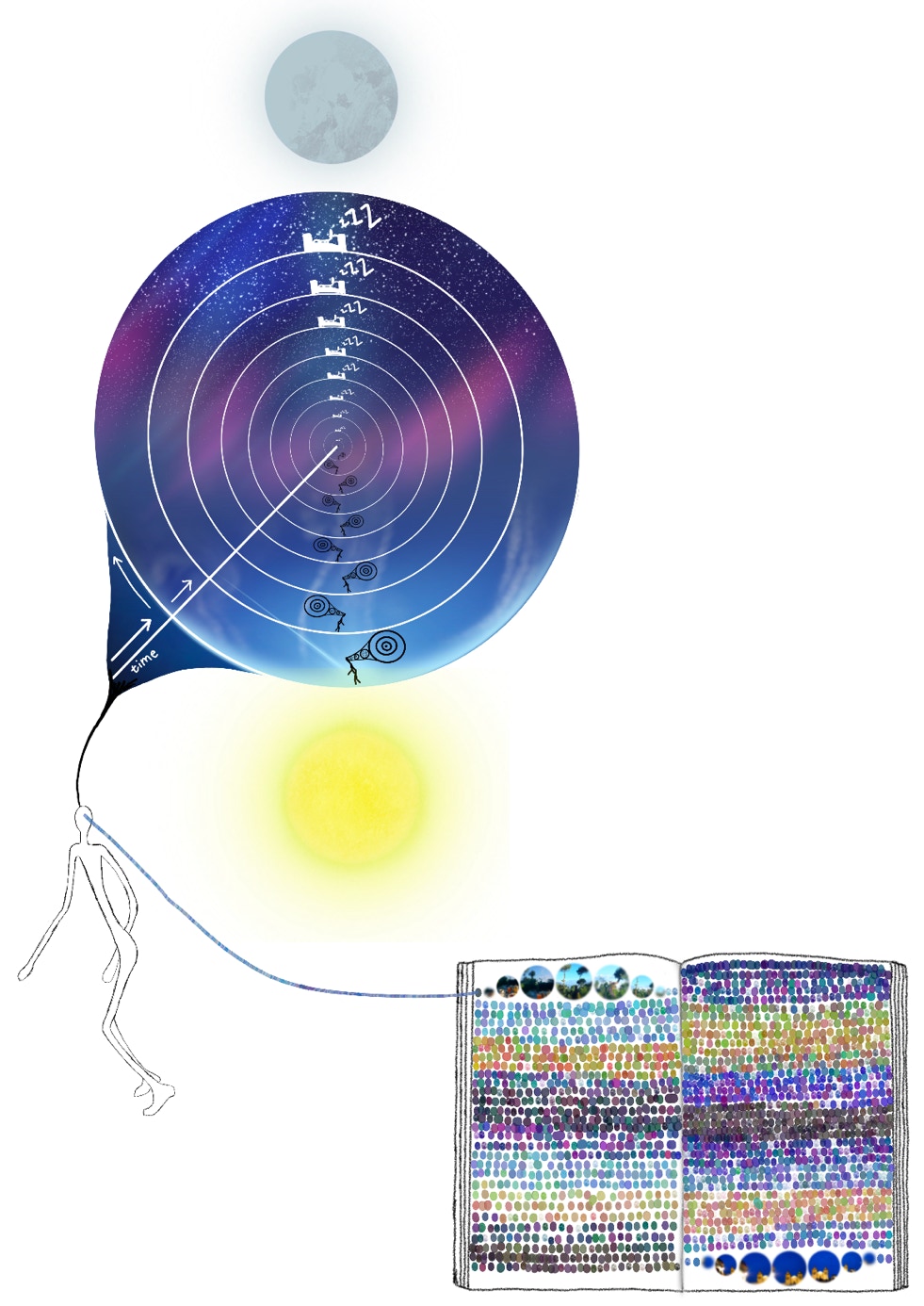
And I said there wouldn’t be too much text but heres just a little: and so we all know Bob Ross was ahead of his time but here is a reminder. (Read quote) — So I definitely agree with this and can specify one definition of imagination further and call it internal creative visualization, which likewise may be something that one can practice and improve upon just like the practice of painting.
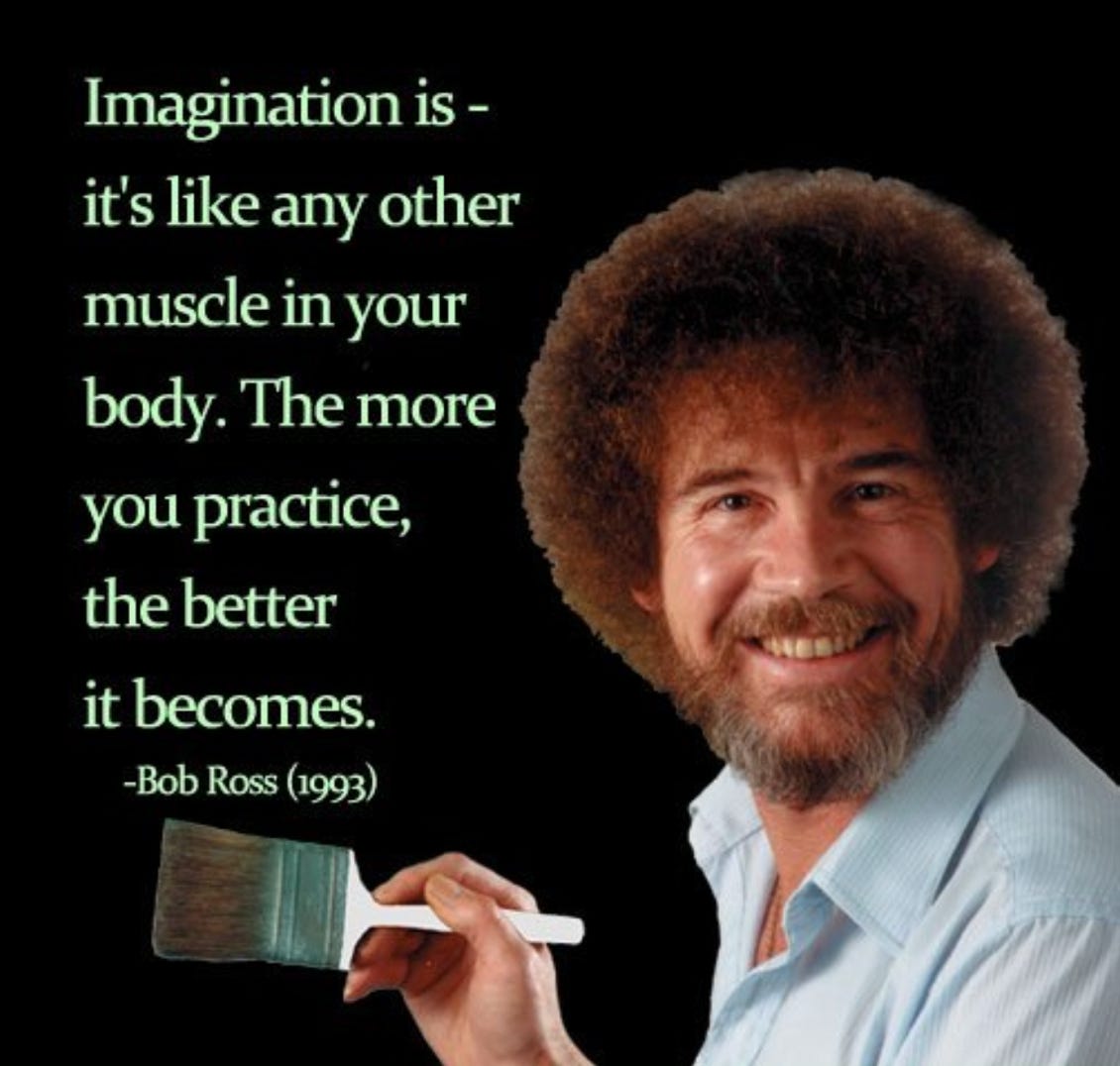
And so here is a hypothetical background canvas that we could paint over.
And this might be familiar to those who have read authors such as Sam Harris, but for example if you look around or out in front of you, you’ll notice the window you see out of is circular or oval, is clearest at wherever you are looking at and gets blurry towards the edges of your visual window. We can then shut our eyes and darken this circular canvas if we want to minimize distractions, and project or “paint” visuals onto it, and the act of doing so is something that can be practiced like an instrument, or like painting... Therefore one abstract way to think about the mind is that of a background canvas, a conscious paintbrush and the imagery it creates.

For example, to paint more details and increase the resolution of the prior image, we can capture that circular window like in the last slide, and play slices of it through time, so now it is more like a tunnel.
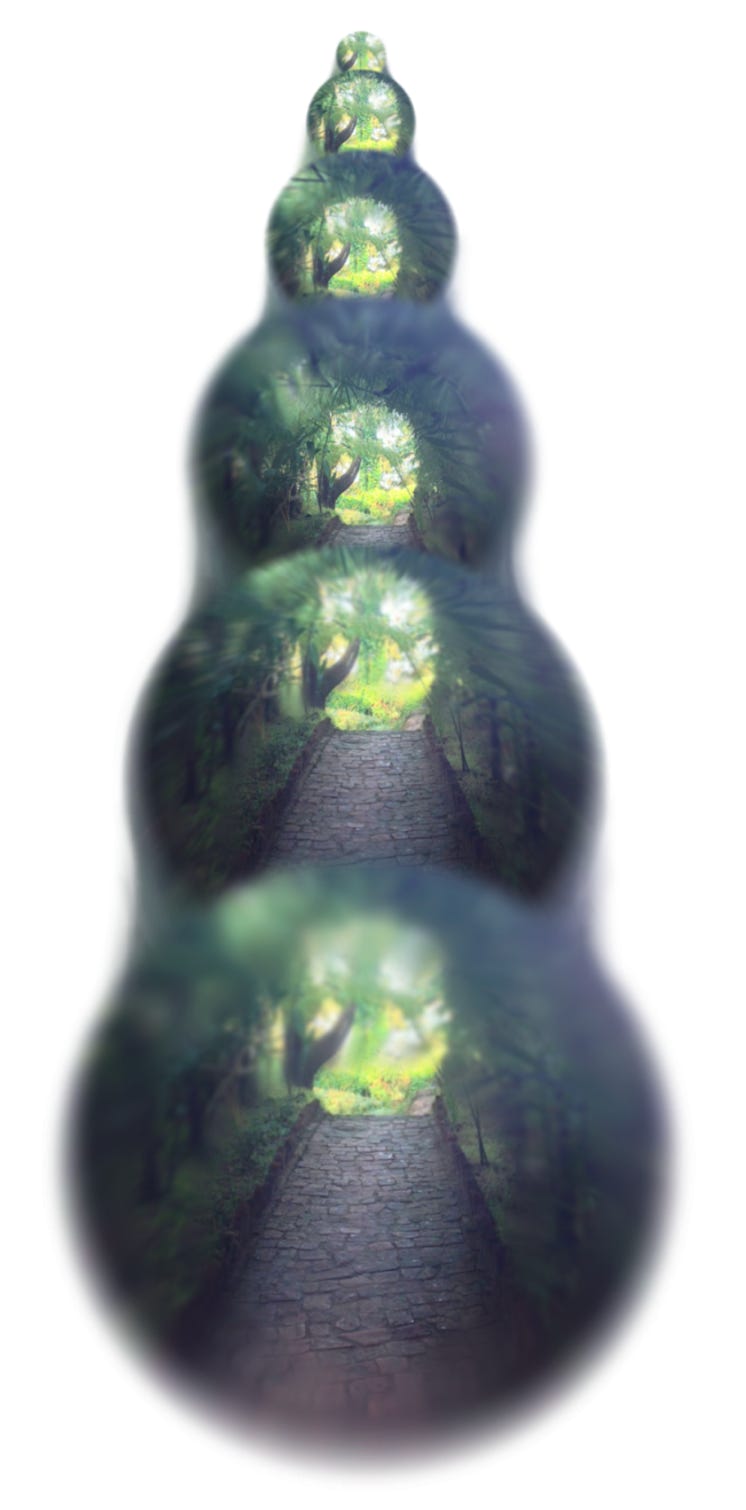
We can then take the mind-camera photo slices composing that tunnel, and rotate and lay them out flat like a chronological scrapbook.
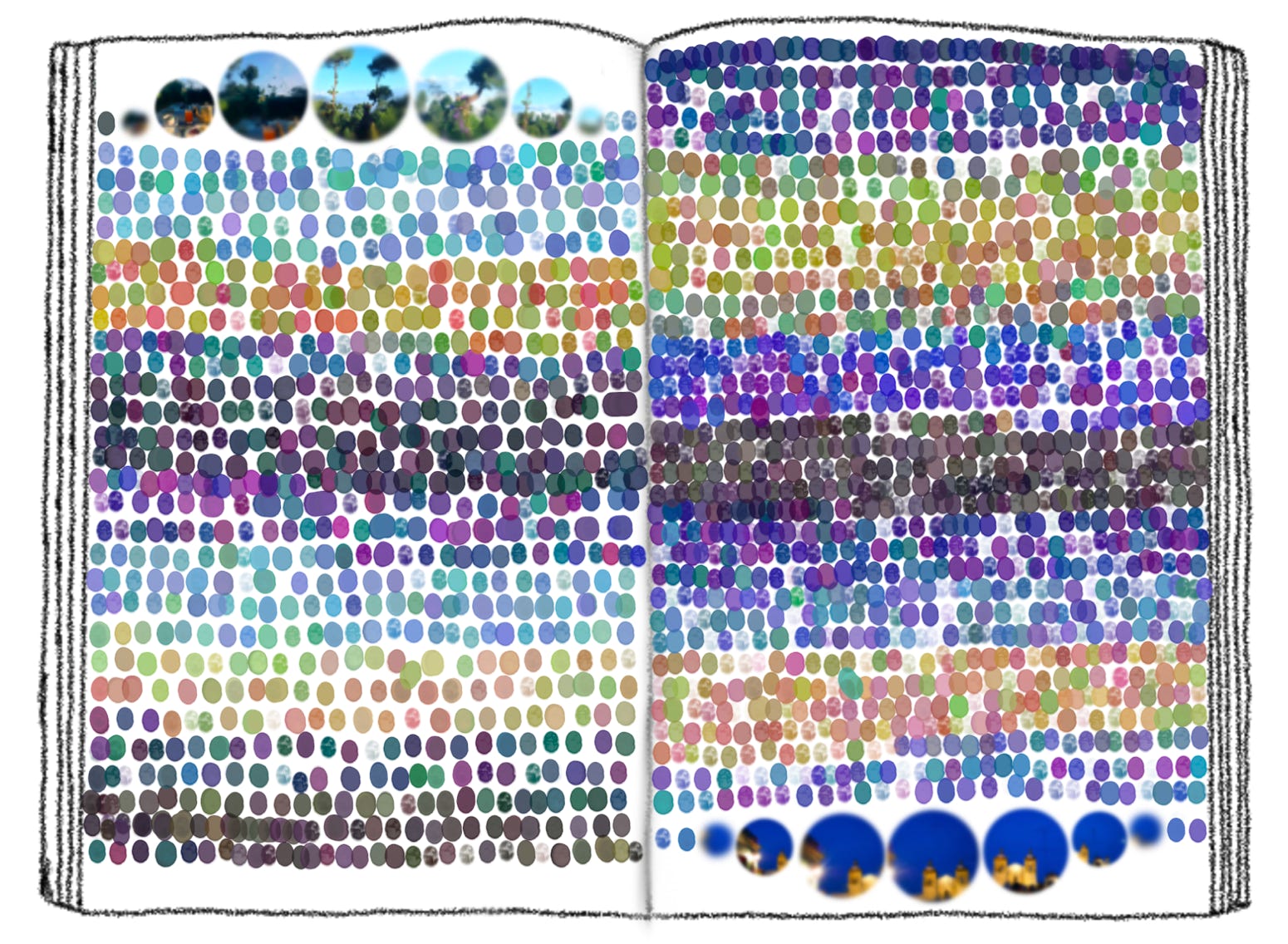
When we imagine how we are continuously writing this scrapbook, then we can also imagine what each of us wants ours to look like.
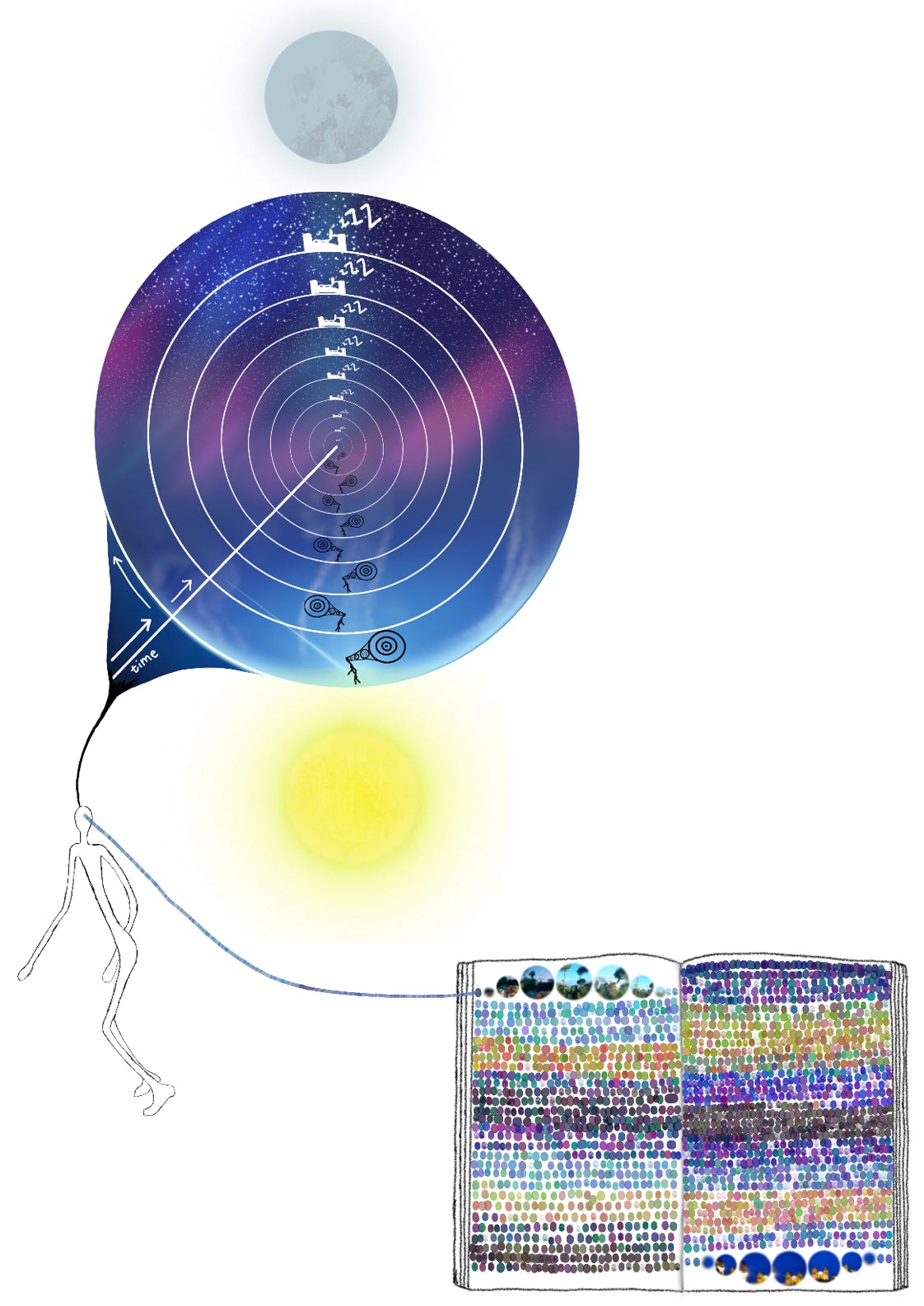
And my final note is just a reminder to take time to practice your imagination — whatever that might look like or sound like and so on.
